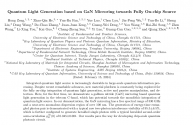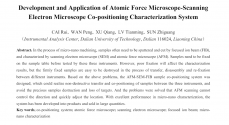Xinlu Technology (RapidFlex) received tens of millions of yuan in angel rounds and is an FPGA chip design company.
Recently, Pudong Technology Investment Angel Fund of Funds, a subsidiary of Pudong Venture Capital, participated in the completion of an angel round investment of tens of millions yuan in FPGA chip design company Shanghai Xinlu Technology Co., Ltd. (hereinafter referred to as "Xinlu Technology").
It is reported that Xinlu Technology is a business-driven design service provider of embedded FPGA chips and programmable SoC (PSoC) chips. It has both EDA software and FPGA hardware R&D capabilities and is committed to providing services to various industries in the industrial, consumer, communications and automotive industries. Embedded FPGA (eFPGA) solutions are provided for various applications.
It is reported that Xinlu Technology is a business-driven design service provider of embedded FPGA chips and programmable SoC (PSoC) chips. It has both EDA software and FPGA hardware R&D capabilities and is committed to providing services to various industries in the industrial, consumer, communications and automotive industries. Embedded FPGA (eFPGA) solutions are provided for various applications.



